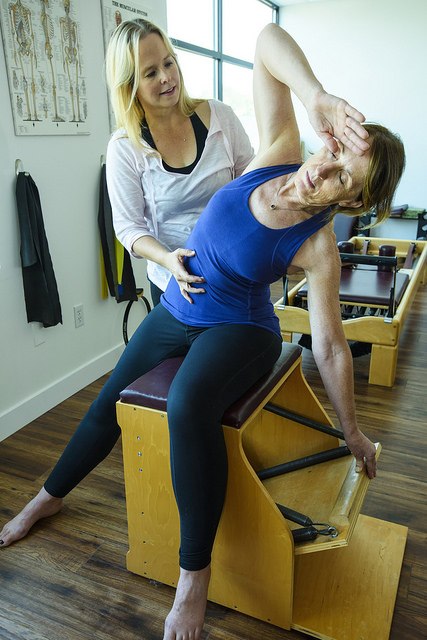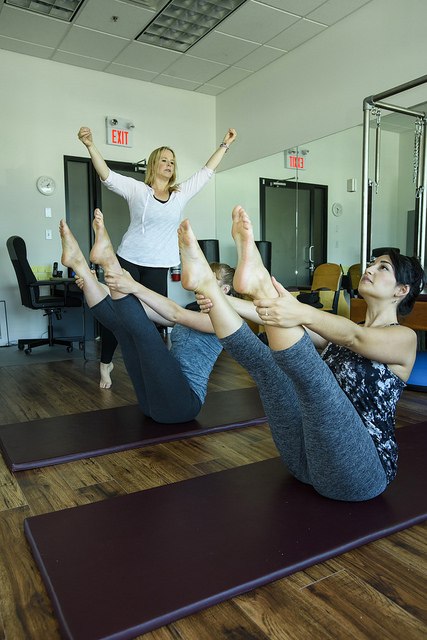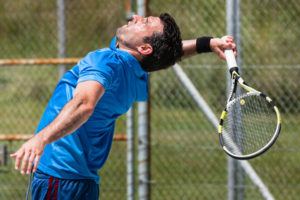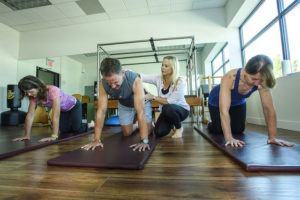How Often Do I Need to Do Pilates to Get Results?
“How often do I need to do Pilates to get results?” This question comes up a lot with newcomers to the Pilates method, and sometimes with veterans of the technique too. Standard guidelines suggest that a minimum of twice to three times per week is necessary to get good results. I’d say that’s mostly true. But I’m not one to stick to protocols just because they’re protocols. I want the best solution FOR YOU. To help you make a smart choice, let’s unpack the question a little further. After answering a few important questions, you’ll have a pretty clear idea about how often you need to do Pilates to get the results you want.
What kind of results do you want?
To know how to get where you’re going, you have to have some idea of where you want to go! What do you hope to achieve? What is the quality of your movement and the state of your overall fitness right now? The goals you start with will have some bearing on your optimal training frequency. Here are a few things to consider:
General Fitness
If general fitness is your goal, then a minimum of twice to three times per week is a pretty good guideline. The Pilates method was designed as a whole and integrated system. Pilates mat work provides a deep connection to you and your own body moving, with limited props and assists. You can take it with you anywhere! The apparatus work (reformer/cadillac/wonderchair etc) offers opportunities to support, load and challenge the body in a variety of different ways. Bodies need variety to learn and get stronger! Mix up your Pilates classes for best results.
Cross Training & Performance
If you’re using Pilates as cross training to improve athletic performance; the frequency necessary to get meaningful results will depend on a number of factors. Your athletic goals, current movement patterning, your training/competition/performance cycles and even available time are considerations when calculating frequency. For many, a Pilates class once or twice a week will be enough to support more efficient movement and improved performance. For others, a more frequent dose of Pilates may be helpful to organize the body well for the demands of the sport/profession. Pilates can help you find a whole new gear in your athletic pursuits.
 Movement Restoration/Rehabilitation
Movement Restoration/Rehabilitation
If you’re rehabilitating an injury, or illness, you have to consider the impact of physical activity on your whole system. Every movement is a whole body movement! When we work to rehabilitate any one part, we have to consider the effects on the whole body. This can take some concentration, and some time. As you recover, you will first be working to deconstruct compensation, perhaps manage pain, and create access to appropriate support and patterning. Then you’ll work to create stamina and strength in the new patterns. Then you’ll progressively integrate all of that in to a whole body movement program. Short cuts here cost you later. Take the time to do it well, and your body will thank you with a much better recovery overall.
Where are you NOW?
Be real with yourself. What is going on in your body right now? Your base level of fitness will have in impact on what is immediately possible to achieve. No matter where you start, you will see results right away if you commit to the work. But if you’re starting at zero, give yourself a little time. Don’t expect to be climbing Everest in the next month. Real change requires commitment and some time.
Pilates has a learning curve!
No matter how fit and athletic you may be, there is a learning curve to Pilates. You will be asked to access new muscles, and to create movement in a way that you may not be used to doing. You may need to focus on releasing currently overactive patterns so you can gain access to new strength. Shifting HOW you move requires concentration and practice. There is a technique and often a re-education to this! (Check out this article on Integrating New Movement Patterns into Higher Level Activities)
Beginner Level:
You’ll learn the form of a whole bunch of new exercises, and the breath patterns that go with each of them. You’ll learn how to connect to your “core” in a supportive and functional way. You will realize that your “core” is not just about your abdominal muscles. Your early workouts may feel more like mental gymnastics than a serious sweat session. You will begin to integrate your whole body in a way that creates a sense of ease and flow.
Intermediate Level:
As you become more practiced in the Pilates method, you will experience a deeper understanding of your own body in motion. You will progressively gain better mobility, strength and control. Your body will be capable of more complex movements without strain. You’ll likely find that you can support more load with less effort. There are more advanced exercises to learn, but even the basics will net better results because you can work through them with a more knowledgable and physically capable system. Movements in other parts of your life will likely feel lighter and more pleasurable. If you’re an athlete, you might notice that you have “more in the tank” than you’re used to, without other contributing factors.
 Advanced Level:
Advanced Level:
At an advanced level, the body becomes capable of sophisticated movement in a wide variety of planes and under a wide spectrum of load demands. You’ll experience a quality of flow as you negotiate difficult physical challenges. The breath becomes truly integrated into every motion, informing and supporting the body. Rather than feeling “beaten up” and depleted by hard workouts, you might feel energized. One of my favourite descriptions from a student was that she experienced feeling “buff but loose” at the same time. In martial arts, some say that the real learning begins at the black belt level. I think the same is true of Pilates. At this level, it’s not about fancy tricks, although those are always fun. There is a depth to the work in the body that can feel truly nourishing.
Seriously, How Often Do I Need to Do Pilates to Get Results?
Once a week:
Once a week is not ideal, but you will see some benefits regardless. You will will learn the exercises and gain some confidence in creating access to your core support. If you continue working out once a week for several months, you will begin to create some change in your movement patterns. Once a week won’t likely develop the strength and stamina you need to sustain the changes or to make substantive structural change. You may spend a significant portion of each session just trying to find the connections you discovered the week before. Although you’ll feel great after class, the results you achieve each time will be hard to hold onto for any length of time.
Twice a week:
With more frequent practice comes more reliable control and an improvement in mobility, strength and stamina. At twice a week, you can begin to build on important connections created in the last class, rather than having to re-create those connections every time. Exercises will be more familiar, so you can spend more mental energy on HOW you’re doing, not just WHAT you’re doing. More frequent practice means steadier improvement.
Three times a week
If you’re looking to create change and develop whole body fitness using the Pilates method, three times a week is often the sweet spot. More focused concentration and continued practice creates changes in the brain that will support more optimal movement patterning. Frequency promotes the development of strength and stamina in the particular way that Pilates promotes. Your new movement patterns remain fresh and available to you, so you can build on them and challenge them more fully each time.
 Four or more times a week
Four or more times a week
There is a lot more to life than Pilates. Get out and play! Challenge your body in different ways. Dance, run, play soccer, ride your bike, play with your kids, lift weights… whatever turns you on! This is particularly true if Pilates is currently your only fitness activity. Unless there is a particular reason you need the kind of support a daily Pilates practice provides, mix up your workouts when you can. To be truly healthy, bodies need to move in a variety of different ways, at different intensity and different speeds. When you start feeling too comfortable, or “expert” at anything – introduce some new challenges!
But Pilates can be expensive!
Pilates is definitely not the cheapest fitness option in the world, particularly if you are taking reformer/apparatus classes. But there are ways to manage it’s really your jam. If you plan on investing in Pilates training for more than a fun, trendy fitness hit – do your homework! Teachers with comprehensive training and experience will often provide better support in reaching your goals. Not all Pilates is equal. Spend your money wisely.
There is a saying that “you can spend money on your health now, or on illness later.” Making a strategic investment in healthy food and fitness is a choice that will increase the likelihood for active, independent aging. (In this Forbes article, fitness is the first of “6 things You Need to Spend More Money On“). What value do you put on your ability to move freely into old age? Regardless of whether you do Pilates or not… you should probably move more.
 Talk to your Pilates teacher about what frequency is best for you based on your needs and what you are able to afford. There may be ways to balance reformer/apparatus and mat work in a way you can manage financially. If you’re dealing with a specific issue, you might want to consider more frequent classes initially. When you get some real traction on the issue you’re working with, you can reduce frequency as appropriate. Many Pilates teachers can set you up with a home program, or teach you strategies for carrying your Pilates learning into other aspects of your life and fitness.
Talk to your Pilates teacher about what frequency is best for you based on your needs and what you are able to afford. There may be ways to balance reformer/apparatus and mat work in a way you can manage financially. If you’re dealing with a specific issue, you might want to consider more frequent classes initially. When you get some real traction on the issue you’re working with, you can reduce frequency as appropriate. Many Pilates teachers can set you up with a home program, or teach you strategies for carrying your Pilates learning into other aspects of your life and fitness.
Pilates works
Pilates is a fantastic way to create a supple, strong and capable body now and into old age. For lasting results, and to open the door to a truly transformative experience, you need to commit to a regular Pilates practice. Scheduling a class once every few weeks can feel good in the moment; but it’s not the path to really meaningful results. Find a teacher you trust, work together to create a plan that will realistically take you where you want to go. So much more is possible than you probably even imagine for yourself right now. Plan your Pilates practice and reach for the the results that are waiting for you. You’re worth it!
Check our Moving Spirit’s Getting Started Guide to learn more about our programs, and book an Introductory Private Training Package today.
About Susannah Steers
 Susannah is a Pilates and Integrated Movement Specialist, and owner of Moving Spirit. Through movement teaching, speaking and facilitating workshops, she supports people in creating movement practices that promote fitness from the inside out. She loves building community, and forging multi-disciplinary connections. Susannah co-hosts the Small Conversations for a Better World Podcast, an interview-based podcast dedicated to promoting the kind of conversations about health that can spark positive change in individuals, families, communities and across the globe.
Susannah is a Pilates and Integrated Movement Specialist, and owner of Moving Spirit. Through movement teaching, speaking and facilitating workshops, she supports people in creating movement practices that promote fitness from the inside out. She loves building community, and forging multi-disciplinary connections. Susannah co-hosts the Small Conversations for a Better World Podcast, an interview-based podcast dedicated to promoting the kind of conversations about health that can spark positive change in individuals, families, communities and across the globe.
